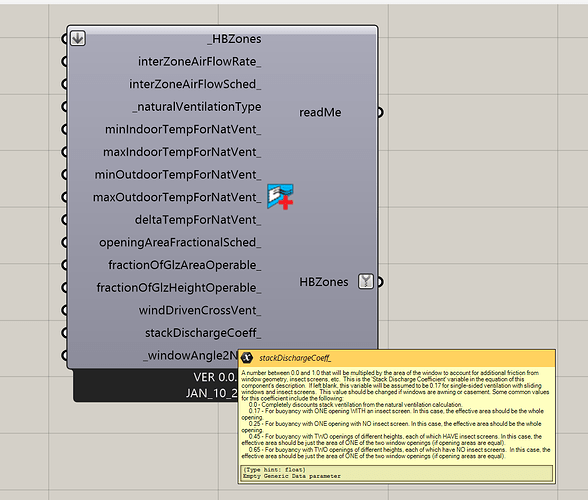@Vincent ,
Glad to find someone who has dug into the formulas on this one and, yes, your last sentence hit it on the nail exactly. There are a couple of different ways of arriving at a decent estimate of the buoyancy-driven airflow. One of them is to use half of the total window height as you mentioned and the 0.65 coefficient. The other (what honeybee uses by default) is to take the total window height but use a smaller coefficient of 0.25. In honesty, the main reason why I preferred the method of adjusting the coefficient is that I knew recommended values for the coefficient that help account for insect screens and, at least in my experience, the vast majority of operable windows have insect screens. You can see in the discharge coefficient description that this is actually why 0.17 is the default (and not 0.25):
I am open to changing the default method if someone makes a case for why an alternative method is better (you are one of the first people I have met on the forum to dig this deep into it). However, I should also mention that part of the reason why there’s an option for CUSTOM STACK/WIND VENTILATION is so that you can customize the buoyancy-driven function exactly as you like if you are not happy with the Honeybee default. Now that you bring it up, though, I realized that I never exposed a way to access the ‘autocalculate’ feature for the stack discharge coefficient. So I just pushed a small change to the component, which will use the ‘autocalculate’ method is you select CUSTOM STACK/WIND VENTILATION and you don’t input anything for the discharge coefficient:
Let me know your thoughts!
